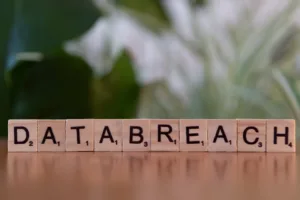
Harvard University is investigating a significant data breach within its Alumni Affairs and Development (AAD) systems, discovered on November 18, 2025, which exposed personal information of a broad university community including alumni, donors, and faculty.1 The intrusion was the result of a sophisticated voice phishing, or vishing, attack, marking the second cybersecurity incident the university has faced in recent months.2 Notifications were sent to affected individuals over the weekend of November 22, 2025, alerting them to the compromise of data that included contact details, donation histories, and event attendance records, though financial information and Social Security numbers were not stored in the affected systems.1
This incident is part of a concerning trend of targeted attacks against Ivy League universities’ development offices, with Princeton University and the University of Pennsylvania also reporting similar breaches in recent weeks.4 Harvard’s endowment and fundraising prowess, routinely raising over $1 billion annually, makes its donor database a high-value target for threat actors.4 The university has confirmed it is working with law enforcement and third-party cybersecurity experts, and has taken immediate action to remove the attacker’s access.3
Attack Vector and Compromised Data
The initial compromise of Harvard’s AAD systems was achieved through a voice phishing attack, a social engineering technique where attackers use phone calls to manipulate individuals into granting system access or revealing credentials.1 Unlike broad, automated email phishing campaigns, vishing often involves more targeted research and direct interaction, making it particularly effective against organizations with complex administrative structures. The specific tactics used to deceive Harvard staff remain under investigation, but such attacks typically involve impersonating trusted entities or IT support to bypass technical controls.
The data exposed in this breach is primarily the information collected and managed for fundraising and alumni engagement purposes.3 According to the university’s disclosure, this includes email addresses, telephone numbers, home and business addresses, records of event attendance, detailed donation histories, and biographical information used for fundraising activities.1 A critical point for risk assessment is that the compromised systems did not contain highly sensitive financial data. Harvard has explicitly stated that Social Security numbers, passwords, payment card information, and bank account details were not exposed in this incident.1
While the absence of direct financial data reduces immediate fraud risk, the exposed personal information is highly valuable for subsequent, more targeted social engineering and phishing campaigns. With detailed knowledge of an individual’s affiliation, donation history, and attendance at specific university events, attackers can craft highly convincing spear-phishing emails or follow-up vishing calls. This data can also be cross-referenced with other breaches to build comprehensive profiles for identity theft or sold on cybercrime forums.
Harvard’s Response and Investigation
Upon discovering the unauthorized access on Tuesday, November 18, 2025, Harvard’s IT security team acted to immediately revoke the attacker’s access to the systems.6 The university officially announced the breach to its community via an email sent on November 22, 2025, from Klara Jelinkova, the Chief Information Officer, and James J. Husson, the head of Alumni Affairs and Development.2 In their communication, they stated, “At this time, we do not know precisely what information was accessed,” indicating the ongoing nature of the forensic investigation.2
The university has engaged third-party cybersecurity firms to assist with the investigation and is coordinating with law enforcement agencies.1 Tim Bailey, Director of Communications for Harvard University Information Technology, provided a formal statement that was widely cited: “Harvard acted immediately to remove the attacker’s access to our systems and prevent further unauthorized access. We are working with third-party cybersecurity experts and law enforcement to investigate this incident.”4 To keep the community informed, Harvard has established a dedicated webpage for updates related to the breach.
As of the initial disclosures, the university had begun sending data breach notifications to individuals whose information was potentially affected, fulfilling its legal obligations.1 The notifications include information about the nature of the exposed data and guidance on steps individuals can take to protect themselves, such as remaining vigilant for suspicious communications that may leverage the stolen information.3
Broader Context of Ivy League Targeting
The breach at Harvard is not an isolated event but part of a concentrated wave of attacks against prestigious U.S. universities, particularly those in the Ivy League.5 Just days before Harvard’s disclosure, on November 15, 2025, Princeton University reported a similar security incident that also involved a phone-based phishing attack.2 The University of Pennsylvania had disclosed its own breach on October 31, 2025, which resulted in hackers releasing internal university documents and donor memos.2 Columbia University also experienced a breach during the summer of 2025.2
This pattern suggests a coordinated or copycat campaign specifically targeting the development and alumni relations offices of these wealthy institutions. These departments manage vast databases containing detailed profiles of some of the world’s most affluent and influential individuals. The information is used for cultivating donor relationships and planning fundraising campaigns, making it a rich source of intelligence for both cybercriminals and potentially state-sponsored actors interested in targeting high-net-worth individuals or gaining leverage over prominent figures.
Furthermore, this is the second major cybersecurity incident that Harvard has had to investigate in a short period. In mid-October 2025, the university was affected by a separate breach linked to a zero-day vulnerability in Oracle software, an incident that was claimed by the Clop ransomware gang.1 The recurrence of significant security events within months highlights the persistent targeting of large educational institutions and the challenges they face in securing complex, decentralized IT environments.
Security Implications and Defensive Posture
The success of this vishing attack underscores the critical human element in cybersecurity defenses. Technical controls like firewalls and intrusion detection systems are ineffective against an attacker who successfully persuades an authorized user to provide access. This incident serves as a stark reminder that security awareness training must extend beyond email to include voice and other communication channels, with a specific focus on verification protocols for remote access requests.
For security teams, the incident highlights the need to classify and protect data based on its sensitivity and the risk its exposure poses, not just to the organization but also to the individuals it represents. While the AAD systems did not contain what is traditionally classified as “sensitive personal information” like SSNs, the aggregated data on individuals’ affiliations, wealth indicators, and personal contacts represents a significant privacy and security risk. Data segmentation becomes paramount; ensuring that critical authentication credentials or access paths to more sensitive systems are isolated from databases targeted by broad engagement campaigns is a necessary defensive strategy.
The fact that multiple Ivy League schools have fallen victim to similar attacks in quick succession suggests that threat actors are sharing methodologies or that a specific playbook for targeting university development offices is being actively used. This calls for increased information sharing between university security teams and a collaborative approach to threat intelligence. Understanding the common Tactics, Techniques, and Procedures (TTPs) used in these attacks can help other institutions harden their defenses and train their staff to recognize and resist such social engineering attempts.
Organizations should review and stress-test their incident response plans for scenarios involving social engineering and unauthorized access to donor or customer relationship management (CRM) systems. Tabletop exercises that simulate a vishing attack leading to a data breach can help identify gaps in detection, response, and communication protocols. Ensuring that monitoring systems are configured to alert on unusual access patterns to these high-value databases, especially from new or unexpected locations, can help reduce the time between compromise and detection.
The Harvard data breach is a significant event that demonstrates the evolving tactics of threat actors and the persistent challenges in securing complex organizational environments. While the immediate financial risk to affected individuals may be lower than in breaches involving financial data, the long-term implications for targeted phishing and reputational damage are substantial. The pattern of attacks against Ivy League development offices suggests a calculated strategy by threat actors to exploit a valuable data source, signaling a need for enhanced defensive measures across the education sector and other organizations managing similar donor or client databases.





